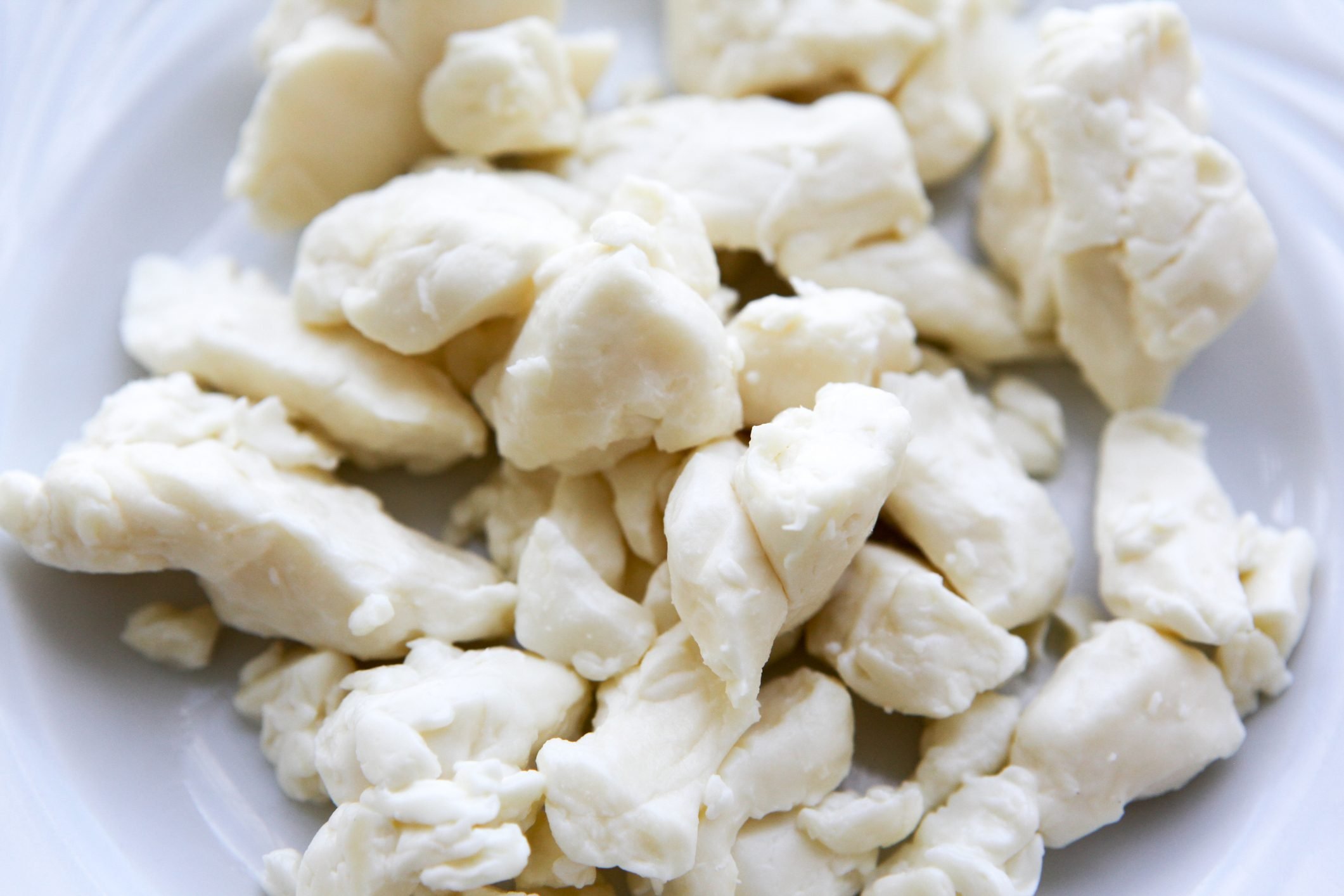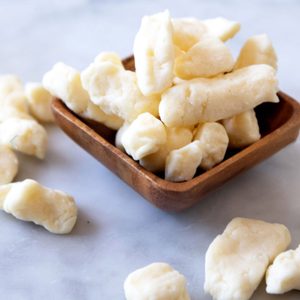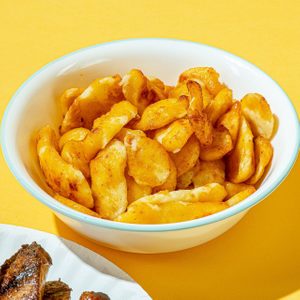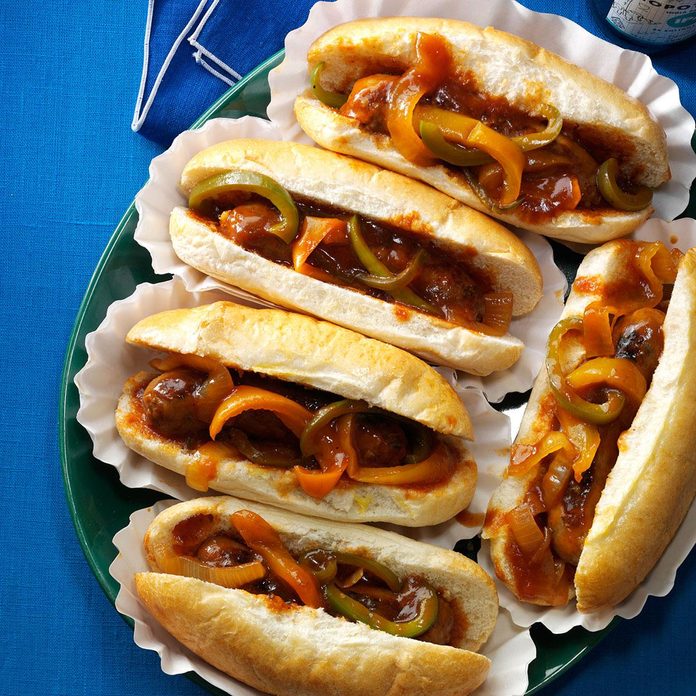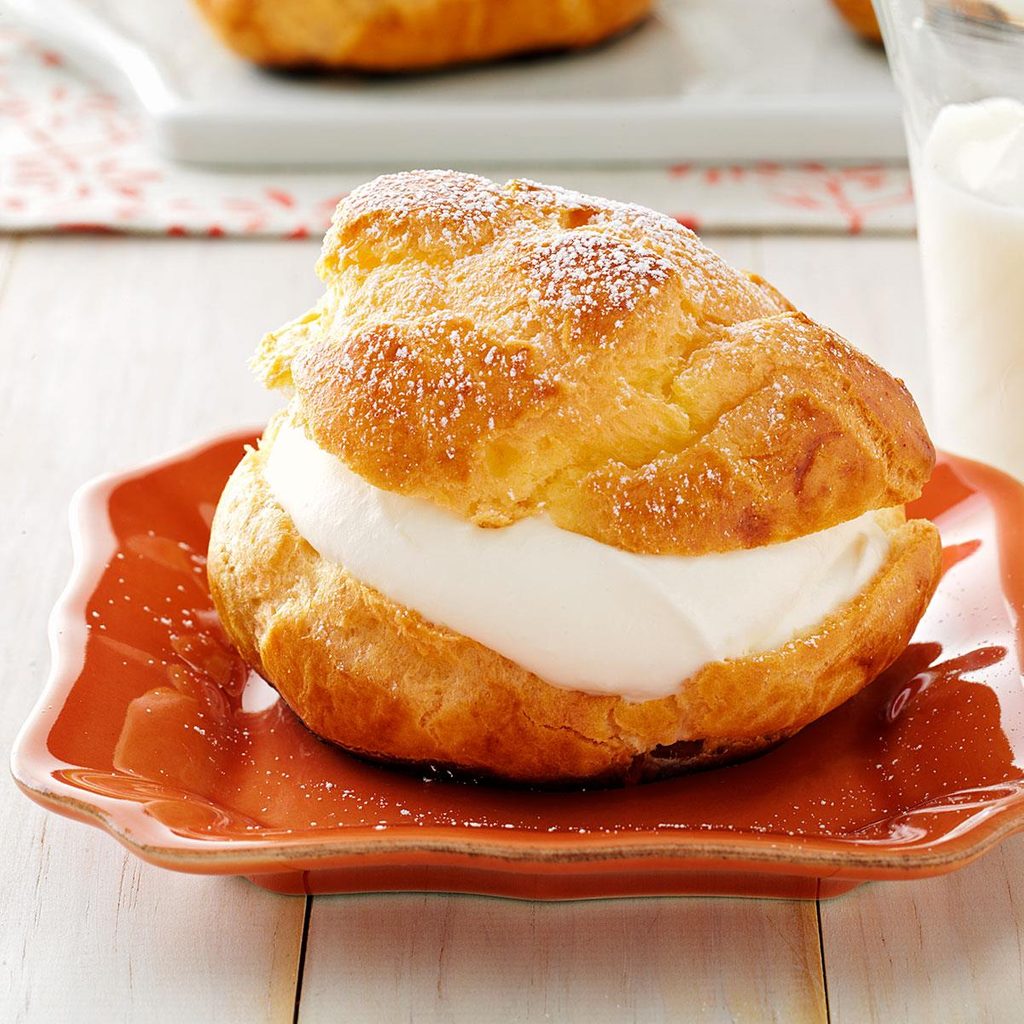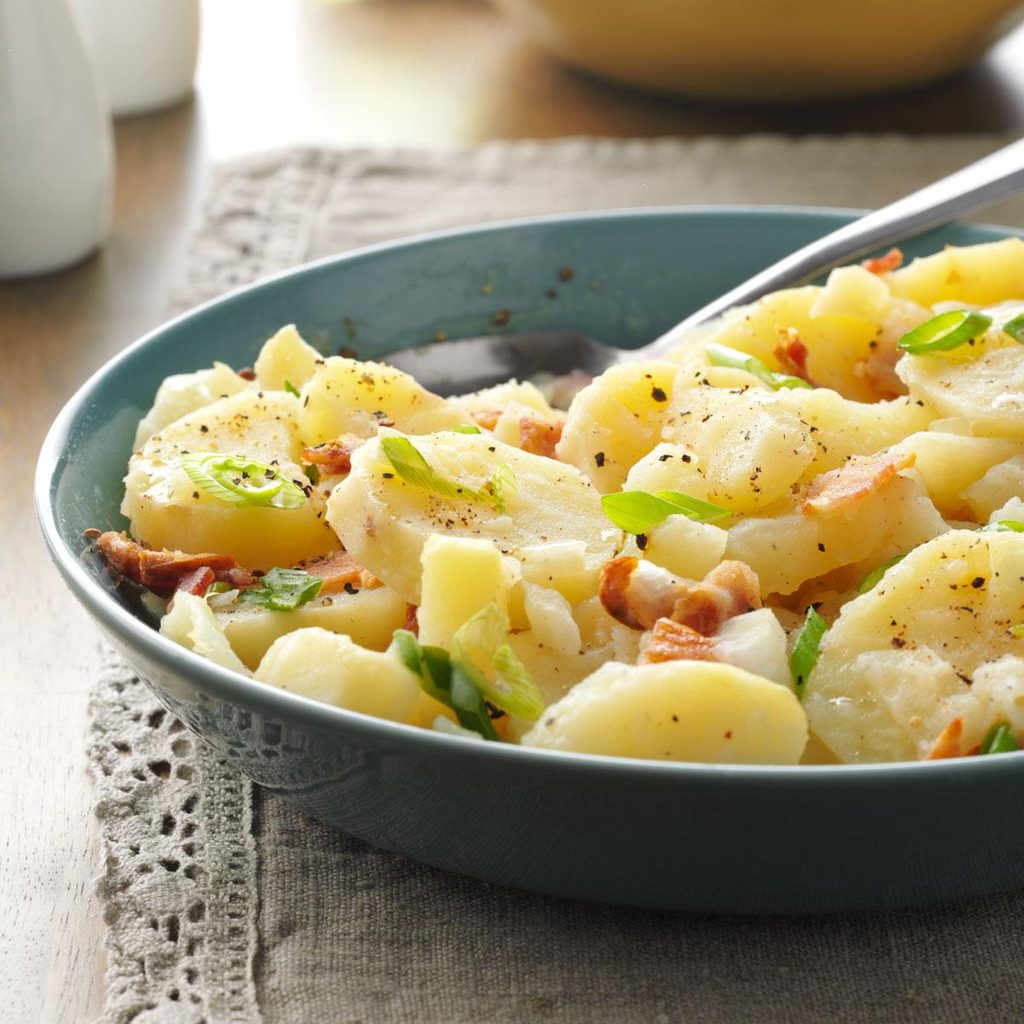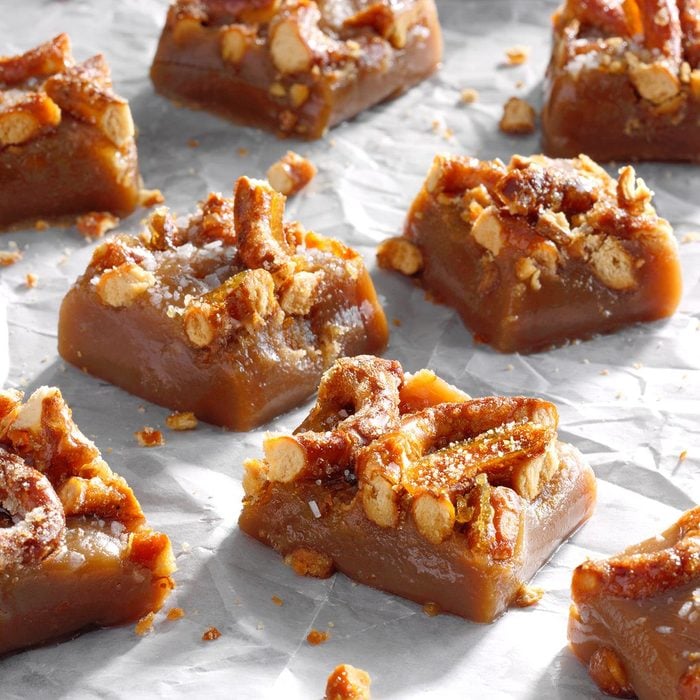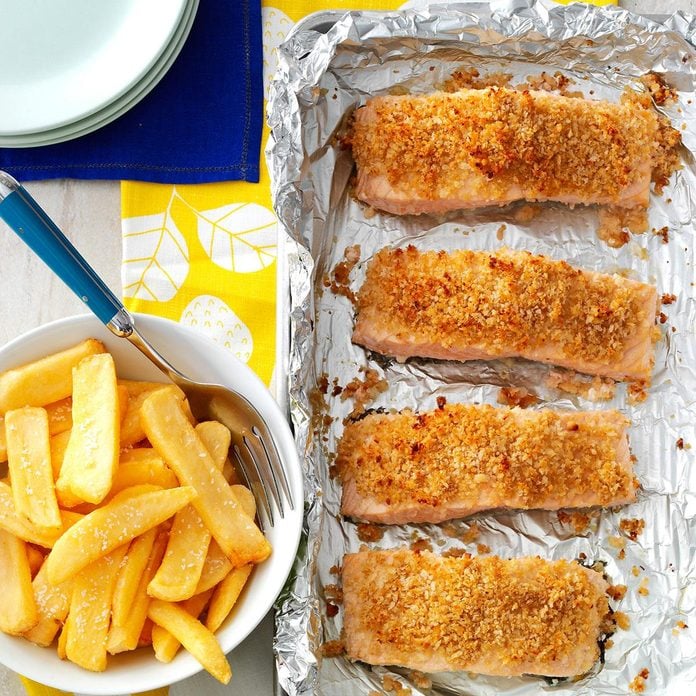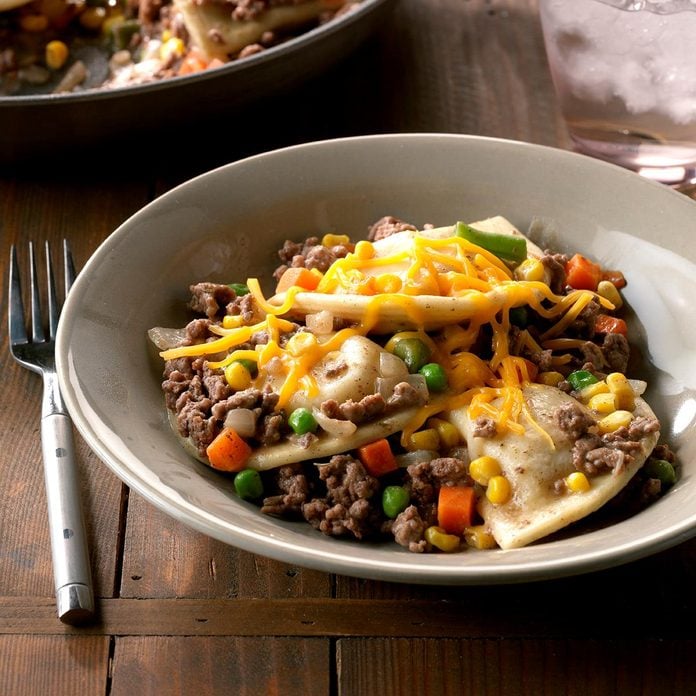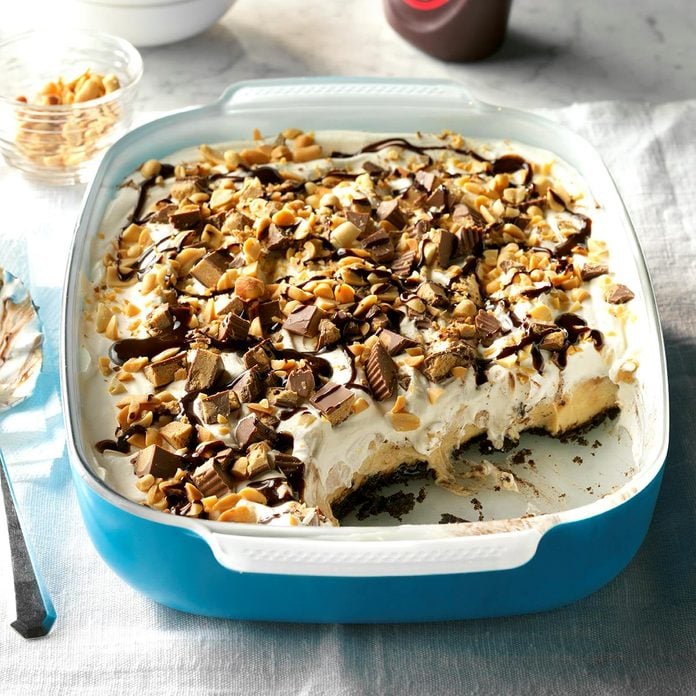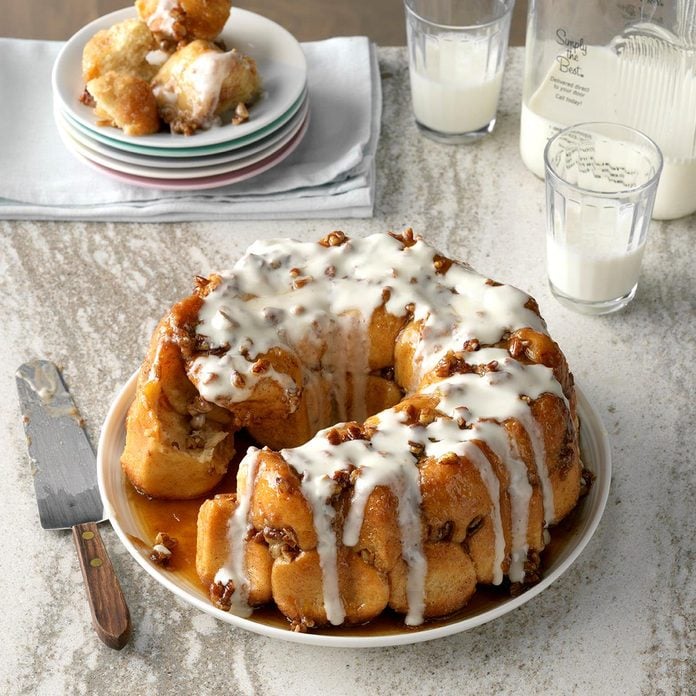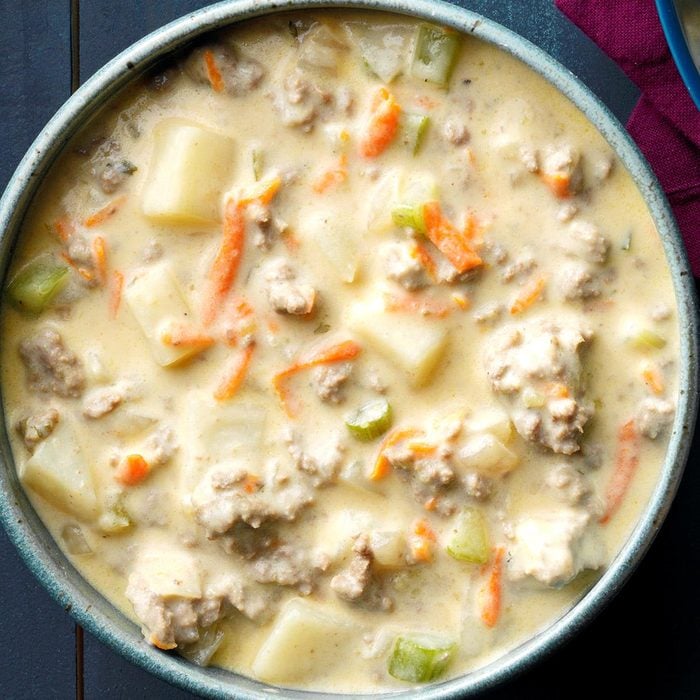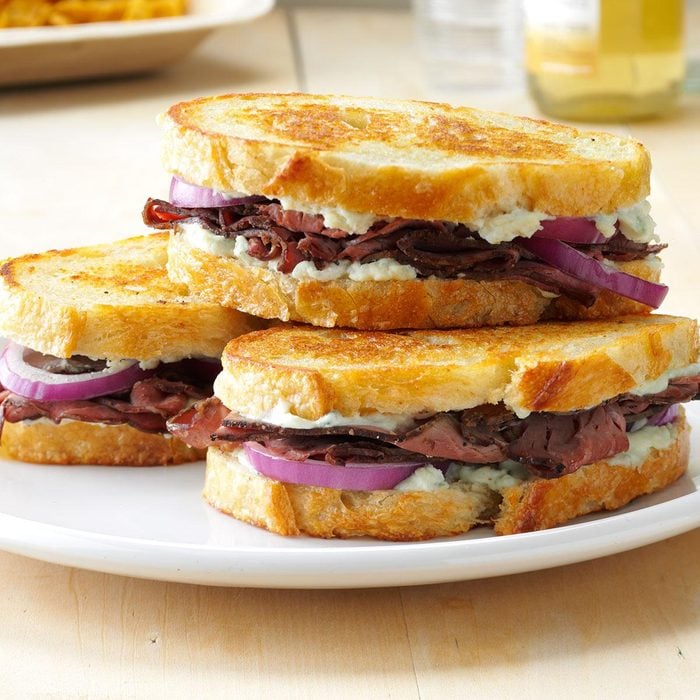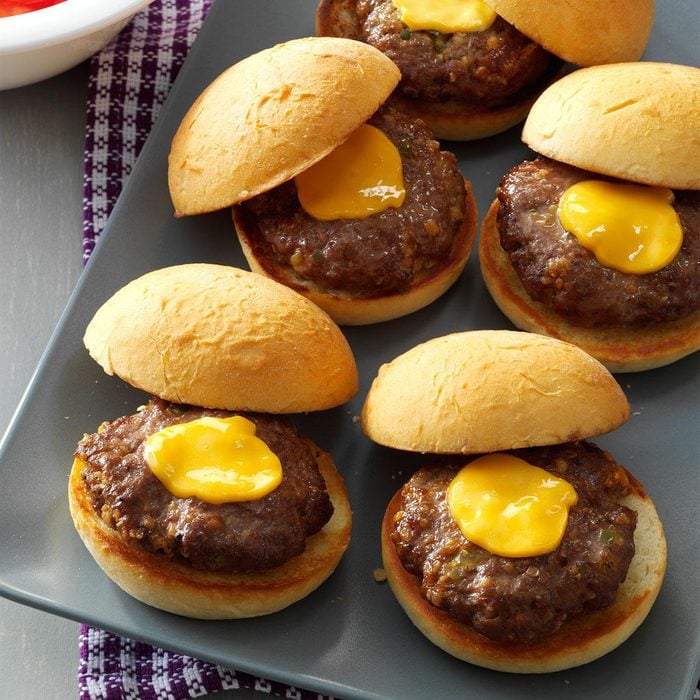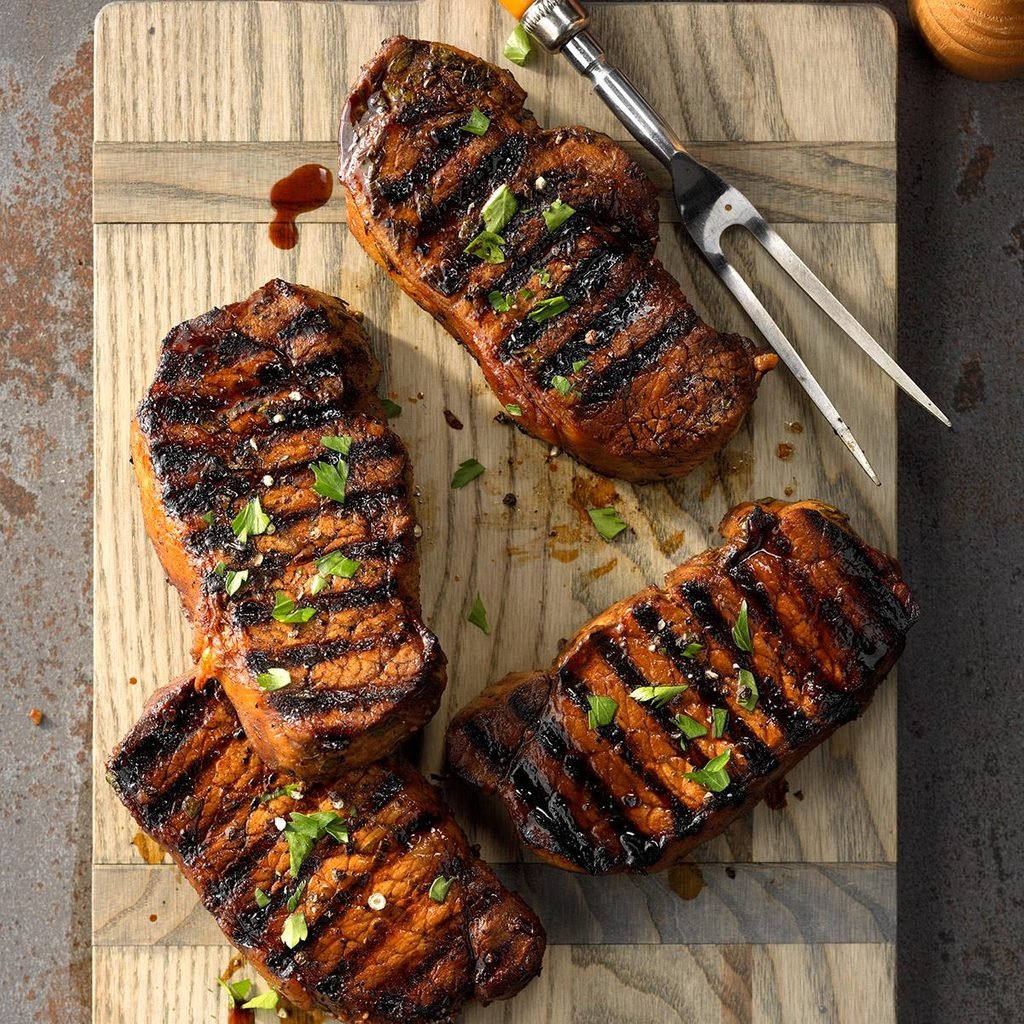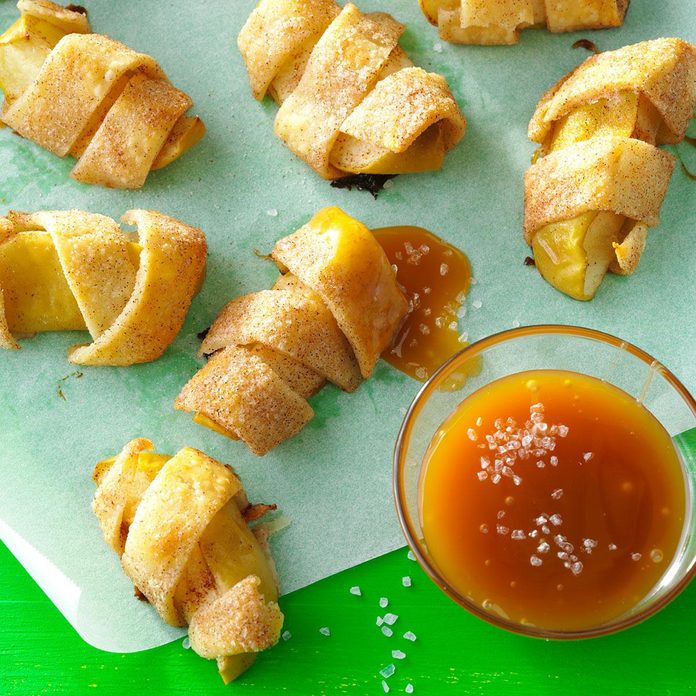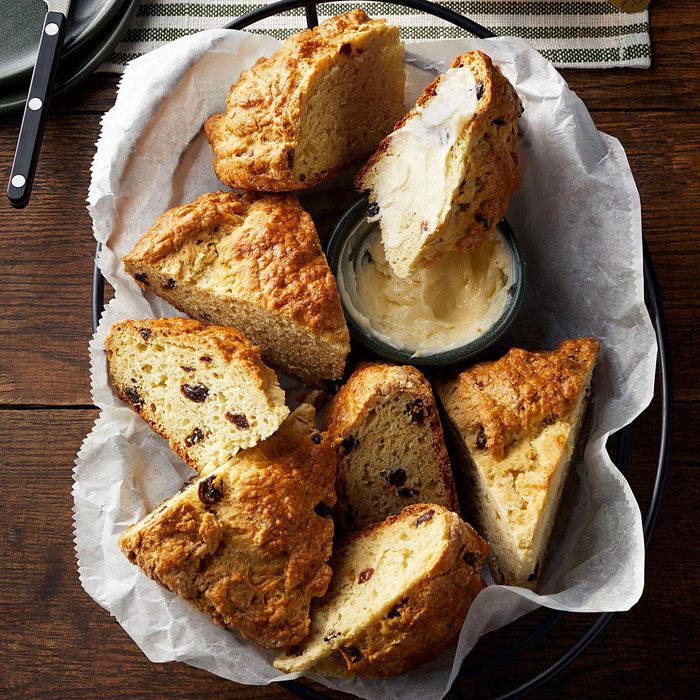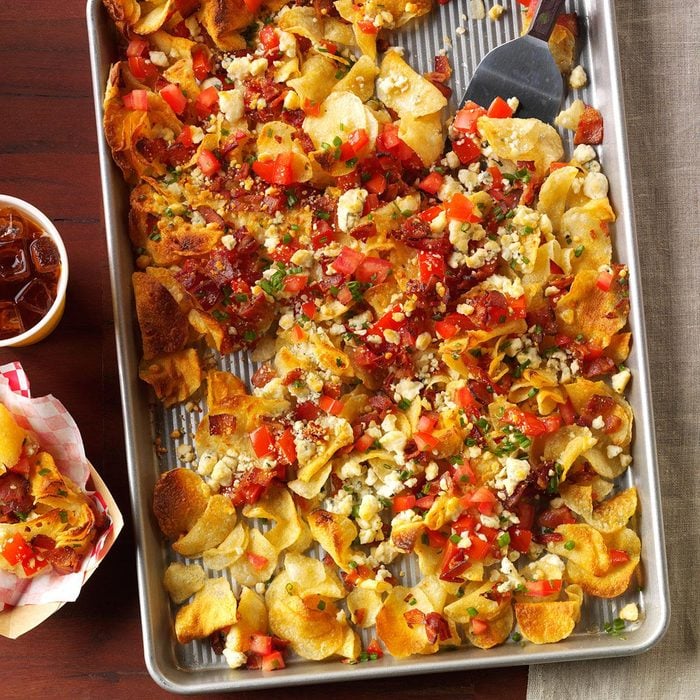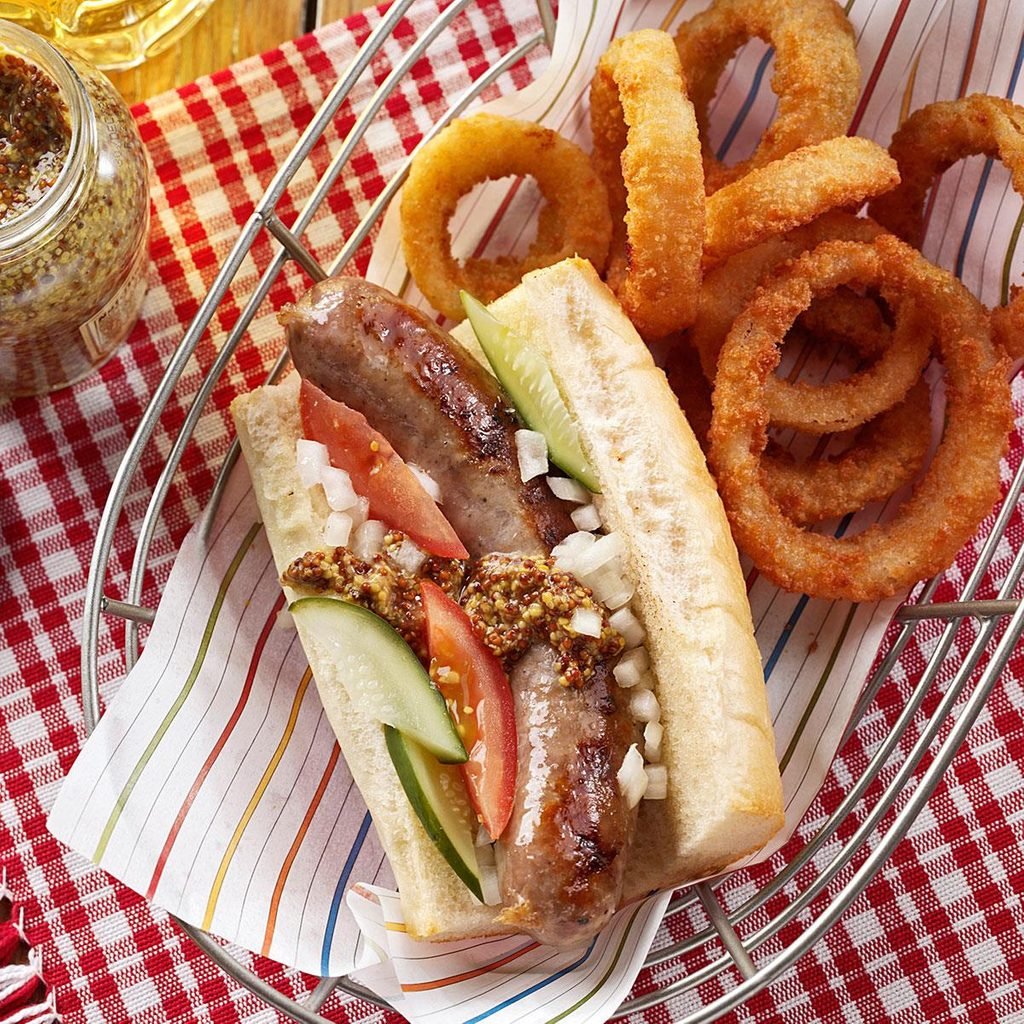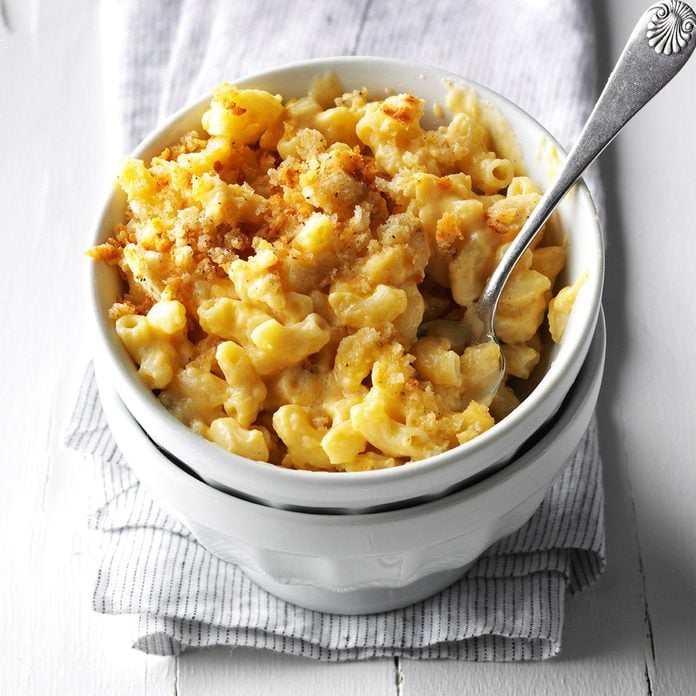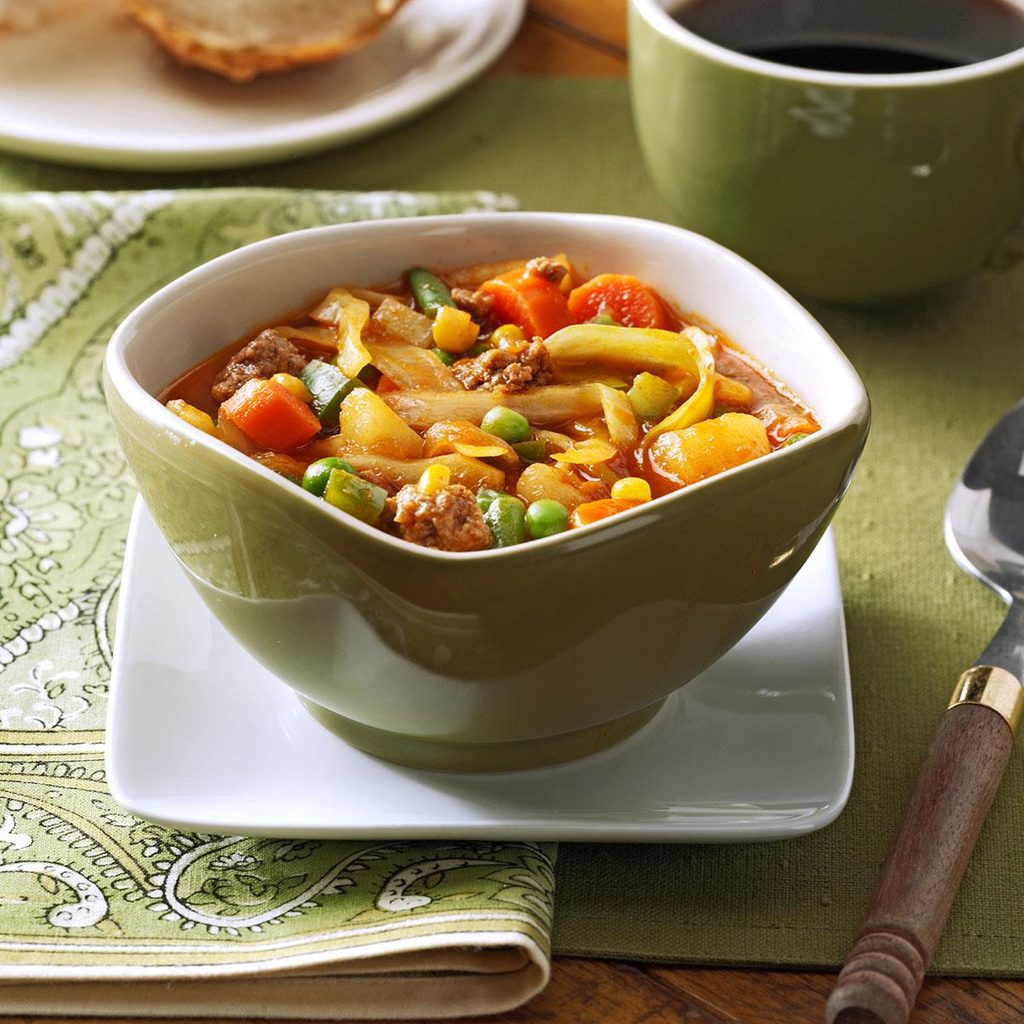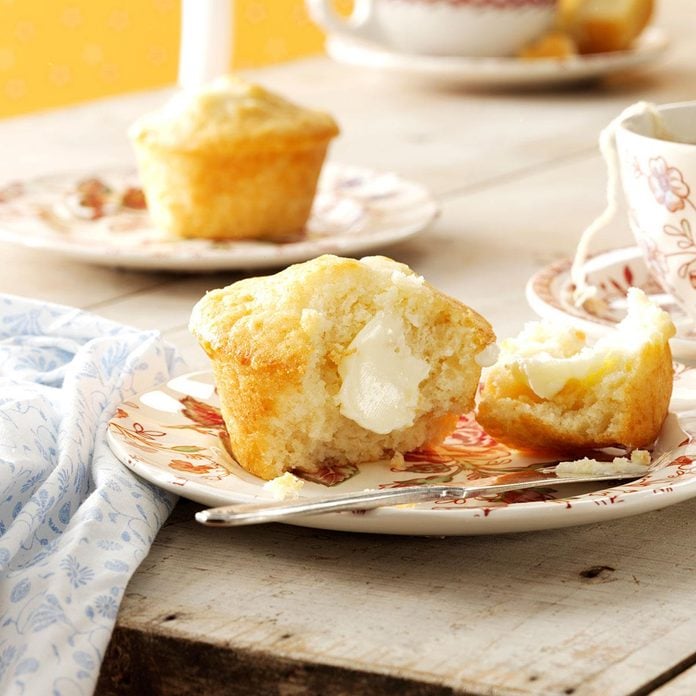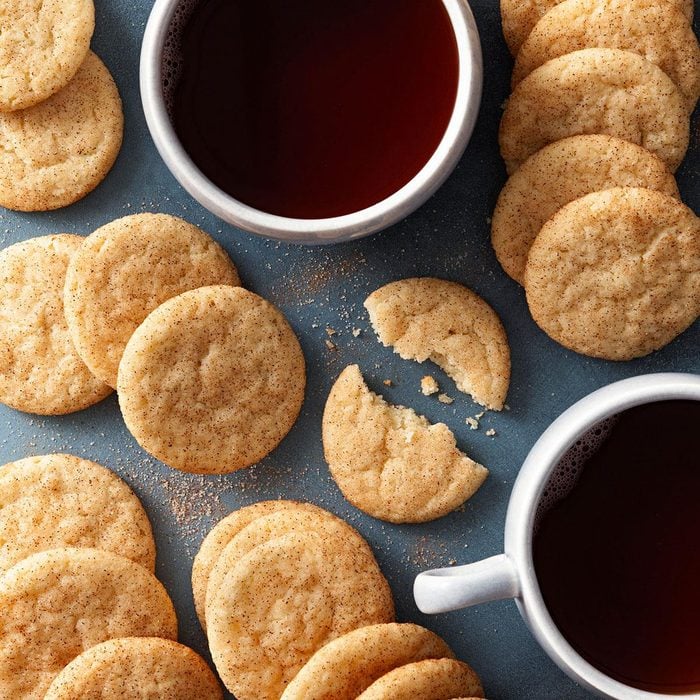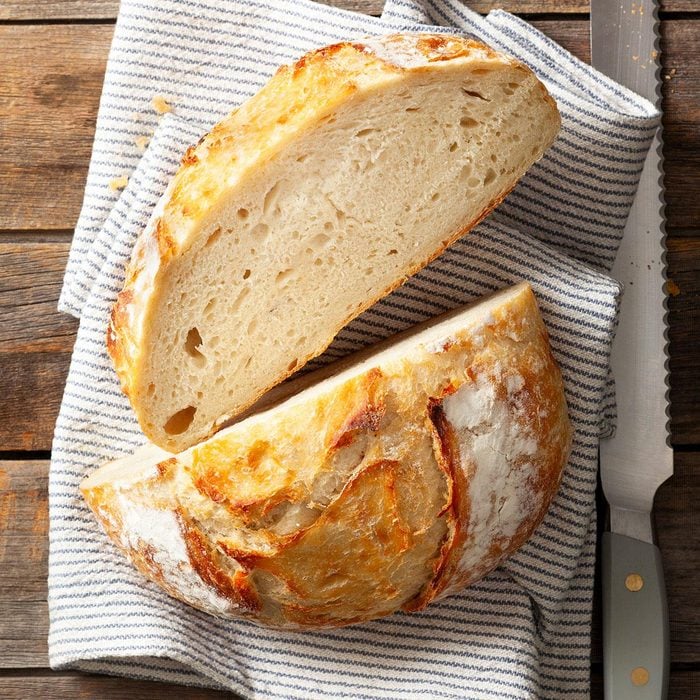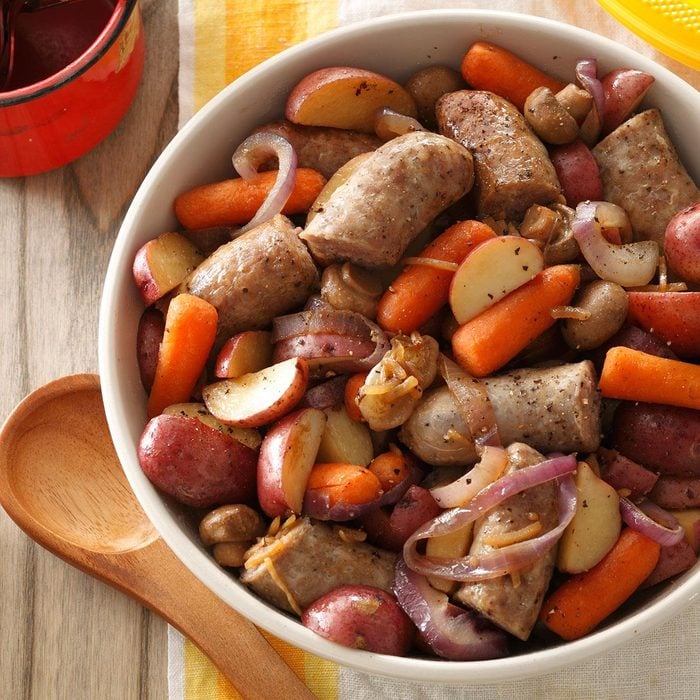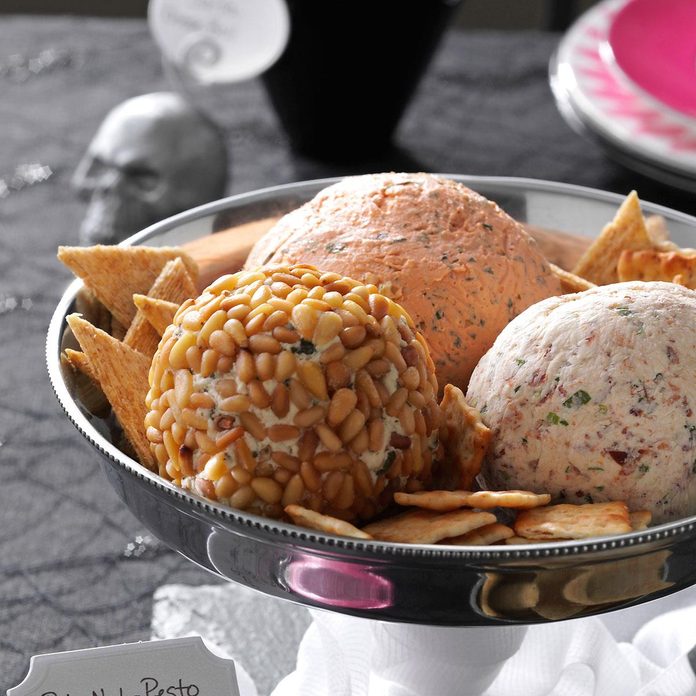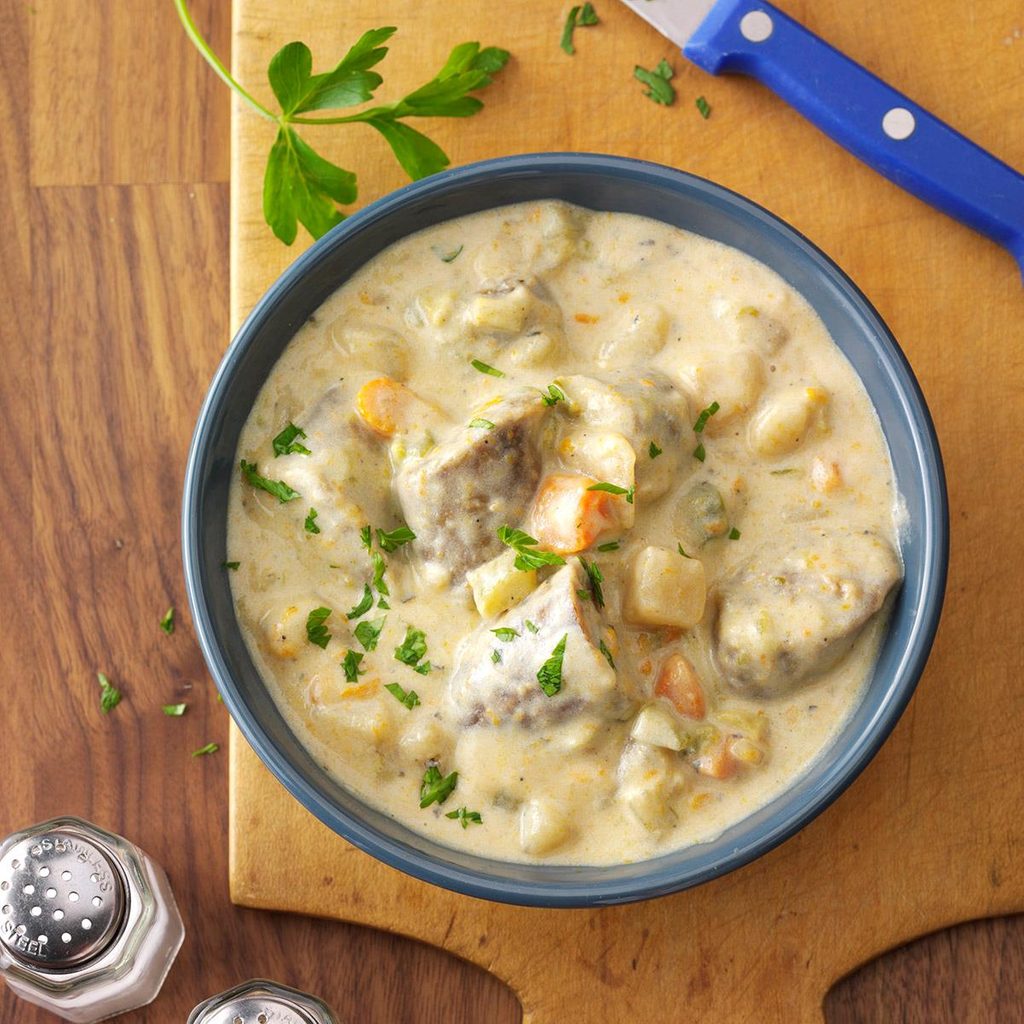What are cheese curds? If you’ve ever been to the Midwest, chances are you’ve eaten them by the bagful. This regional specialty is widely available across Wisconsin, as well as Ontario and Quebec in Canada. These wrinkly, squishy pieces of fresh dairy goodness are typically served on their own, atop poutine or battered and deep-fried.
What Are Cheese Curds?
Curds are ultra-fresh cheese bits known for their springy texture and squeaky sound.
Squeaky cheese curds start with pasteurized cow’s milk that’s heated to 90 to 100°F, then cultured. The culture is a strain of good bacteria made from fermented milk. Culture makes fresh milk more acidic, helps it curdle and ultimately gives cheese its unique texture and flavor.
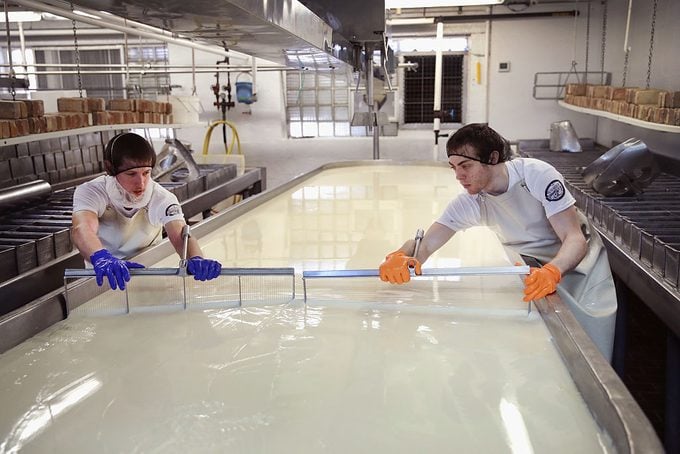 Scott Olson/Getty Images
Scott Olson/Getty Images
Next, the cultured milk gets coagulated by adding rennet, a clotting enzyme that separates the milk solids (curds) from the liquid (whey) and helps impart flavor. Using cheese harps (aka curd cutters or wire knives), cheesemakers cut the curds to help expel the whey. Then, in a process called “ditching,” the cheesemakers push the curds into clumps on either side of a cheese vat. The vat has a channel down the middle for draining the whey.
Why Do Cheese Curds Squeak?
Cheddaring is the process that gives cheese curds their squeak, and it’s also the first step in making aged cheddar cheese. Here’s how it works.
After ditching, cheesemakers slice the clumped curds into large chunks called loaves. Then, they hand-turn and stack the chunks several times while steaming them at around 100° to help extrude more whey.
 Scott Olson/Getty Images
Scott Olson/Getty Images
Once the pressed and drained curds have reached the correct firmness and moisture level, it’s time to mill them into their signature squiggly shape, then wash them with warm water. After a thorough salting, they’re ready to package for sale.
In a large-scale professional operation, the whole curd-making process takes about four hours from start to finish and can make thousands of pounds of cheese. Cheese curds don’t need to be refrigerated for the first 24 hours, and many people will tell you they’re best enjoyed straight out of the bag (or the vat) when they’re so fresh they’re still warm—which is when they’re at their squeakiest.
See why Wisconsin cheese really is the best.
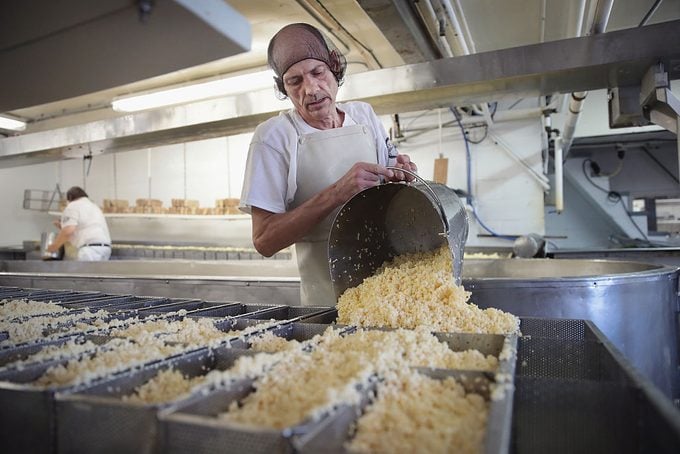 Scott Olson/Getty Images
Scott Olson/Getty Images
The Science of Squeaky Cheese
Ready for the science behind the squeak? Cheese curds have a network of proteins. The proteins are called casein, and they’re held together by calcium phosphate bonds. This springy network rebounds when you bite into a curd. That rebound creates vibrations that make the curds emit their signature squeak.
Why do curds lose their squeak? It’s because of the acid in the cheese culture. Over time, acid breaks down the curd’s tight protein network and silences the squeak forever. But, culture is also how you end up with aged cheese.
Let’s say you’re not within driving distance of a creamery. If you must get your cheese curds from the refrigerated section, you can sometimes bring their squeak back.
The unofficial way to do this is to stick the bag of curds on your dashboard while you drive home from the store on a sunny day. But cheese scientists at the Center for Dairy Research at the University of Wisconsin-Madison have developed a more precise method.
They’ve determined that after storing cheese curds at 45° (the approximate temperature of your fridge’s cheese drawer) for up to two weeks, you can re-squeakify them by reheating four ounces of curds for 15 seconds in the microwave.
Where to Buy Wisconsin Cheese Curds
The ability to extend a curd’s squeak by storing them at a cold enough temperature and carefully reheating them is good news if you don’t live in Wisconsin (or Canada). While there’s nothing like stopping at the gas station to pick up a bag that’s squeaky-fresh, you can have cheese curds shipped to your doorstep for the next best thing.
Cheesemakers usually limit curd shipping to certain days of the week and times of the year to make sure you get the freshest possible product. But we say the wait is worth it! Here are some Wisconsin favorites:
- Ellsworth Creamery Cheddar Cheese Curds: Ellsworth Cooperative Creamery has been producing its famous cheddar curds since 1968. These are the same curds Wisconsinites enjoy every June at the annual Ellsworth Cheese Festival.
- Battered Wisconsin Cheese Curds by State Street Brats: These battered cheese curds are flavored with garlic, paprika and other spices. They’re shipped frozen on ice, so all you have to do is bake them in the oven to enjoy an authentic Wisconsin bar experience at home no matter where you live.
- Clock Shadow Creamery Cheddar Cheese Curds: These curds come from a Milwaukee cheese factory, located in the historic Walker’s Point neighborhood. If you’re local, you can give them a call to find out exactly when fresh-out-of-the-vat curds are available on Tuesdays, Wednesdays and Thursdays.
- Renard’s Wisconsin Cheese Curds: If you want award-winning curds, try the ones from this third-generation family owned and operated cheesemaker that’s been around since 1961.
How to Make Cheese Curds
In the Midwest, this means, “how to deep-fry cheese curds.” Basically, you make a dry mixture of flour, salt and any optional seasonings you want to include, then combine that with a wet mixture of egg, milk and beer (or buttermilk) to create a batter.
Dip the curds in the batter, then fry them at 375° until the outside is golden brown. Restrain yourself until your freshly fried curds are cooled enough to not burn your tongue, and you’ll be in melty, crispy cheese heaven.
The Best Recipes from Wisconsin
Barbecue Brats & PeppersWe live in brat country, and this barbecue-style recipe feeds a crowd. The sauce gives it a welcome change from the same old grilled bratwurst. — Maria Zrucky, Kronenwetter, Wisconsin
State Fair Cream PuffsThe Wisconsin Bakers Association has served this cream puff recipe at our state fair since 1924. —Ruth Jungbluth, Dodgeville, Wisconsin
Easy German Potato SaladThis tangy potato salad stirs memories of my grandma, who made it for us. Now my mom makes it with brats and sauerkraut, truly the best meal! —Devin Mulertt, Cedarburg, Wisconsin
Deep-Fried Cheese BitesThese beer-battered cheese curds are the ultimate in delicious comfort food. Some folks like to serve them with ranch dressing, ketchup or barbecue sauce for dipping. —Katie Rose, Pewaukee, Wisconsin
Beer and Pretzel CaramelsBeer and pretzels are a natural combination—mix them with smooth caramel and you have an awesome candy. The guys will go wild over these crunchy, chunky chews. —Jenni Sharp, Milwaukee, Wisconsin
Brandy Old-FashionedIn Wisconsin, we do things differently with this classic cocktail. Learn how to make a Badger State brandy old-fashioned to sip wherever you call home.
Slow-Cooker Cheddar Bacon Beer DipMy tangy, smoky dip won the top prize in our office party recipe contest. Other beers can work for this, but be sure to steer clear of dark varieties. —Ashley Lecker, Green Bay, Wisconsin
Crispy Fish & ChipsA British pub classic turns crown jewel when you add horseradish, panko and Worcestershire. You can also try it with a white fish like cod or haddock. —Linda Schend, Kenosha, Wisconsin
Pierogi Beef SkilletHearty and thick with beef, veggies and potatoes, this is a complete meal in one. —Taste of Home Test Kitchen
Peanut Butter Custard Blast"Ooey, gooey, great!" is how friends and family describe this chocolate-peanut butter dessert. I appreciate the make-ahead convenience. —Marilee Evenson, Wisconsin Rapids, Wisconsin
Caramel-Pecan Monkey BreadThe kids will get a kick out of pulling off gooey pieces of this delectable monkey bread. It's hard to resist a caramel-coated treat. —Taste of Home Test Kitchen
Cheeseburger SoupFind out why this easy cheeseburger soup recipe is one of the top-rated recipes on our site!
Brat & Bacon Appetizer PizzaChopped bratwurst and maple bacon are a fabulous way to start a pizza. I jazz up this treat even more with apricot preserves and honey mustard. The snack-sized slices win over even the toughest critics. —Colleen Vrooman, Waukesha, Wisconsin
Grilled Beef & Blue Cheese SandwichesRoast beef, red onion and blue cheese really amp up this deluxe grilled sandwich. If you like a little heat, mix some horseradish into the spread. —Bonnie Hawkins, Elkhorn, Wisconsin
Party Time Mini CheeseburgersKids and adults alike will love the taste of these moist and mouthwatering mini burgers. Juiced up with pickle relish and topped with cheese slices, these "sliders" will disappear in no time flat! Be sure to make plenty. —Taste of Home Test Kitchen
Ranch Potato SaladIf the texture of a mayonnaise-based potato salad isn’t your thing, this ranch potato salad recipe just might be the one for you. Bonus: It also includes bacon and cheese.
Grilled Boneless Pork ChopsThese sweet, spicy and aromatic grilled boneless pork chops get soaked in a parsley balsamic marinade to develop a bright flavor.
Apple Pie BitesThese apple pie bites are fun for kids to make. Simply wrap strips of pastry around apple wedges and shake on some cinnamon-sugar. Then just bake and watch them disappear! —Taste of Home Test Kitchen
Irish Soda BreadOur Irish soda bread recipe yields a traditional loaf that would make any Grammy or Granda proud. Don’t forget to let the fairies out!
Blue Cheese Potato ChipsGame day calls for something bold. I top potato chips with tomatoes, bacon and tangy blue cheese. I make two big pans, and they always disappear. —Bonnie Hawkins, Elkhorn, Wisconsin
Grilled Seasoned BratwurstWhether you're hosting a picnic at home or at a park, cook these bratwurst on the stovetop first. Then you can quickly brown them on the grill. —Taste of Home Test Kitchen
Best Ever Mac & CheeseTo make this amazing mac, I make a sauce loaded with three different cheeses to toss with the noodles. When baked, it's gooey goodness with a crunchy topping that...don't get me started! —Beth Jacobson, Milwaukee, Wisconsin
German Vegetable SoupMy sister-in-law gave me this recipe—it's a nice thick soup. It does call for quite a few ingredients, but the taste is worth it!—Gundrun Braker, Burnett, Wisconsin
Grandma's Honey MuffinsI can remember my Grandma Wheeler making these delicious muffins—we'd eat them nice and warm, fresh from the oven! She was a "pinch of this and handful of that" kind of cook, so getting the ingredient amounts correct for the recipe was a challenge. Now it's a family treasure! —Darlis A. Wilfer, West Bend, Wisconsin
Loaded Mashed PotatoesTake a classic dish for a spin with this loaded mashed potatoes recipe, with fresh, savory flavors elevating one of our favorite comfort meals.
SnickerdoodlesThe history of these whimsically named treats has been widely disputed, but their popularity is undeniable. Help yourself
to one of our soft cinnamon-sugared cookies and see for yourself. —Taste of Home Test Kitchen
Crusty BreadThis easy crusty bread recipe proves that you absolutely can make a bakery-quality loaf at home—no kneading required. Once you've mastered the basic recipe, try variations with cheddar, herbs and more.
Bratwurst SupperAfter trying a few bratwurst recipes, I've found this meal-in-one is ideal for camping since it grills to perfection in a heavy-duty foil bag. Loaded with chunks of bratwurst, red potatoes, mushrooms and carrots, it's easy to season with onion soup mix and a little soy sauce. —Janice Meyer, Medford, Wisconsin
Rhubarb Custard BarsOnce I tried these rich, gooey bars, I just had to have the recipe so I could make them for my family and friends. The shortbread-like crust and the rhubarb and custard layers inspire people to find rhubarb that they can use to fix a batch for themselves. —Shari Roach, South Milwaukee, Wisconsin
Celebration Cheese BallsA handful of simple ingredients that go together in minutes, three fun flavorful options…these creamy cheese balls from our Test Kitchen are a darling, do-ahead delight for busy holiday hostesses! Why not whip up several batches? —Taste of Home Test Kitchen, Milwaukee, Wisconsin
Creamy Bratwurst StewA rich sauce coats this hearty combination of potatoes, carrots and bratwurst chunks. I adapted a baked stew recipe that appeared in a newspaper. This is so comforting on cold winter evenings. —Susan Holmes, Germantown, Wisconsin
Apple CrispEvery bite of this apple crisp has tart, tender apples and a cinnamon streusel topping. It smells like heaven when it's baking too!
